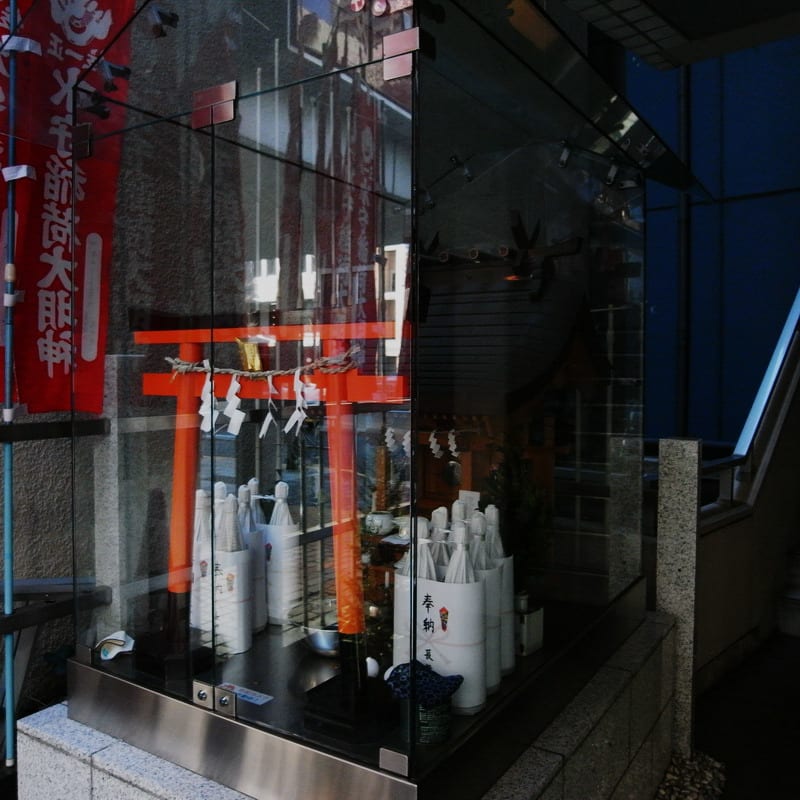
11326056g2.jpg
The shrine in a glass house is very strange view for me. Would the glass wall stop the power of the deity?
This place was one of the beaches of Edo and at those time, they held a big fish market.
On 1703 the Richter scale 8.1 earthquake near the cape Nojima of Chiba caused a 1-3 meters tunami to the water fronts of Edo. (In the Rikugi park of Bunkyo ward, all of the pine trees died owing to the salt water) It's recorded as the Genroku big earthquake and tunami.
(This earthquake rose the land between the Nojima island and Honshu island to bridge them. Now, it is the Cape Nojima.)
Almost of the old shrines in this area are built on the higher place from the sea level. This one is almost the same as the sea level. I think this one was built at least the fifty years after the Genroku tunami.
(水守稲荷大明神、芝四丁目、Shiba, Minato ward)
The shrine in a glass house is very strange view for me. Would the glass wall stop the power of the deity?
This place was one of the beaches of Edo and at those time, they held a big fish market.
On 1703 the Richter scale 8.1 earthquake near the cape Nojima of Chiba caused a 1-3 meters tunami to the water fronts of Edo. (In the Rikugi park of Bunkyo ward, all of the pine trees died owing to the salt water) It's recorded as the Genroku big earthquake and tunami.
(This earthquake rose the land between the Nojima island and Honshu island to bridge them. Now, it is the Cape Nojima.)
Almost of the old shrines in this area are built on the higher place from the sea level. This one is almost the same as the sea level. I think this one was built at least the fifty years after the Genroku tunami.
(水守稲荷大明神、芝四丁目、Shiba, Minato ward)


























I can always see , at many small shrines, people dedicate cans of beer or cup-bottles of sake. The believers usually change the dedications every week or every month in Tokyo area.